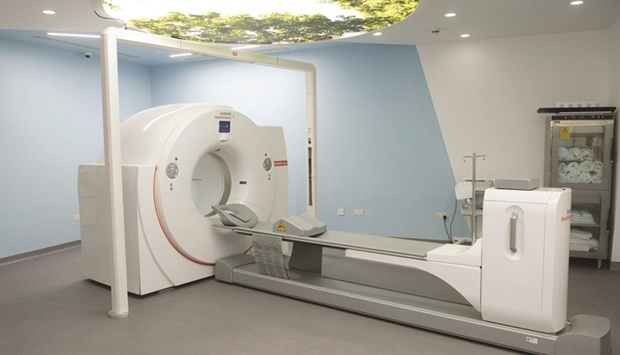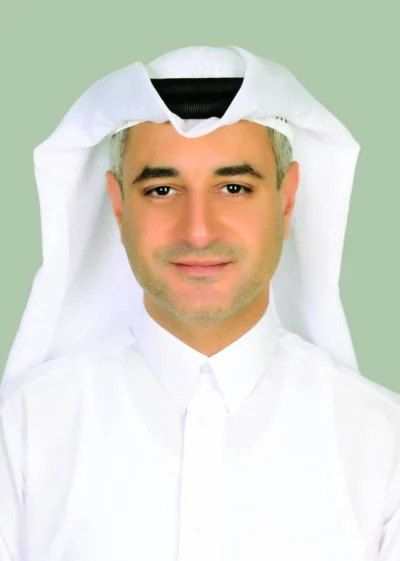* First radiopharmaceutical lab in Qatar opens
Hamad Medical Corporation (HMC) has announced the commencement of nuclear treatment of tumours following the opening of the first Radiopharmaceutical Laboratory in in the country.
The new laboratory, located at HMC’s National Center for Cancer Care and Research (NCCCR), will provide cancer patients with diagnostic and therapeutic care locally, saving them the need to travel abroad for such care.
The new laboratory, located at HMC’s National Center for Cancer Care and Research (NCCCR), will provide cancer patients with diagnostic and therapeutic care locally, saving them the need to travel abroad for such care.
 Dr Maryam al-Kuwari, senior consultant radiologist and chief radiologist at HMC, stated that the new radiopharmaceutical laboratory undertakes the preparation of radiation drugs used for diagnosing and for nuclear treatment of tumours.
Dr Maryam al-Kuwari, senior consultant radiologist and chief radiologist at HMC, stated that the new radiopharmaceutical laboratory undertakes the preparation of radiation drugs used for diagnosing and for nuclear treatment of tumours. These drugs are safely prepared in conformance with international standards where doses are meticulously calculated to suit the types of tumours and the needs of patients. Drug doses are subject to quality control checks prior to administrating them to patients, Dr al-Kuwari explained.
“The nuclear treatment of tumours is based on radioactive drugs which target and destroy cancerous cells without affecting normal or healthy surrounding cells. This technique is a highly effective option to treat malignant thyroid, hepatic, prostate, and endocrine tumours. Following the diagnostic process, therapeutic drugs are prepared by a highly trained team. Similar laboratories will be established across HMC facilities in the future to meet patient needs in the country,” Dr al-Kuwari added.
Nuclear medicine therapy is an approach to treating cancer that might be used with or after other treatment options, such as chemotherapy and surgery. It won't usually lead to a cure unless combined with other therapies. But for many people it will control symptoms and shrink and stabilise the tumours, sometimes for years.
An example of the latest technologies utilised at the unit is the introduction of the 2nd Positron Emission Tomography - Computed Tomography, better known as PET-CT. Clinical research has shown that PET-CT diagnostic approach is far more effective than conventional scanning as it helps healthcare professionals differentiate malignant tumours from benign ones. The PET-CT has helped reduce patients' wait time and allowed performing tests in a timely manner. More than 25 tests can now be performed daily at the unit.
 Dr Haya al-Meraikhi, consultant of diagnostic radiation for breast cancer at HMC, stated that the Nuclear Medicine unit has introduced other state of the art diagnostic modalities such as Positron Emission Mammography (PEM). This first of a kind tool in Qatar is licensed by the US Food & Drug Administration and helps diagnose early-stage breast cancer as well as the remission of the condition after surgery and radiotherapy. Compared to conventional mammogram, PEM is more effective in screening young women for breast cancer as the diagnosis can be more difficult due to breast tissue density. It also provides more conclusive test results revealing tumours even less than 1cm in size.
Dr Haya al-Meraikhi, consultant of diagnostic radiation for breast cancer at HMC, stated that the Nuclear Medicine unit has introduced other state of the art diagnostic modalities such as Positron Emission Mammography (PEM). This first of a kind tool in Qatar is licensed by the US Food & Drug Administration and helps diagnose early-stage breast cancer as well as the remission of the condition after surgery and radiotherapy. Compared to conventional mammogram, PEM is more effective in screening young women for breast cancer as the diagnosis can be more difficult due to breast tissue density. It also provides more conclusive test results revealing tumours even less than 1cm in size.PEM modality is ideal for patients who cannot undergo Magnetic Resonance Imaging (MRI) due to reasons such as claustrophobia, having pacemakers implanted, or allergic to MRI contrast dye. The use of PEM depends on the condition of the patient upon consultation with the attending oncologist. The PEM modality can produce a 3D high-resolution image that is 80% clearer than that produced by conventional mammogram.
 Dr Ali Barah, senior consultant and deputy head of Interventional Radiology at HMC, stressed the role of interventional radiology in the diagnosis and treatment of benign and malignant tumours through small incisions where guided fine catheters and visualising equipment are used to inject chemotherapy or radiotherapy drugs in the affected area without having to recourse to invasive surgery.
Dr Ali Barah, senior consultant and deputy head of Interventional Radiology at HMC, stressed the role of interventional radiology in the diagnosis and treatment of benign and malignant tumours through small incisions where guided fine catheters and visualising equipment are used to inject chemotherapy or radiotherapy drugs in the affected area without having to recourse to invasive surgery. Tumours less than 3cm in diameter can also be treated either by cryotherapy – better known as Cryoablation - or by high frequency thermotherapy, particularly tumours in the liver, kidneys, and bones. For treatment with Cryoablation, a fine needle is guided by a CT or other visual device to locate the tumour in the organ and destroy the cancer cells by freezing them under extremely low temperature.
For tumours larger than 7cm in diameter, which are common in organs like the liver, and cases where procedures using ordinary catheters are too hard to perform, treatment can be administered using a method known as Internal Radiotherapy where a radioactive agent is injected in the tumour area. 120 cancer patients have been treated with Internal Radiotherapy since the inception of this technique at HMC, 40 of which were in 2021.
The Interventional Radiology unit comprises a team of four consultants, one specialist, and three interns. Four catheter laboratories are located at Hamad General Hospital, Ambulatory Care Center and NCCCR. Each of these laboratories is equipped with an imaging unit and a CT system for biopsies and sampling.



